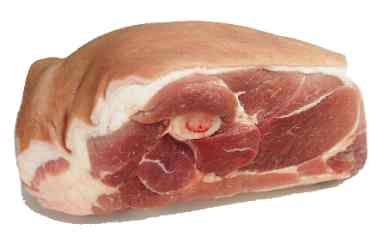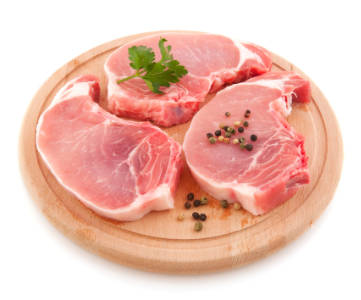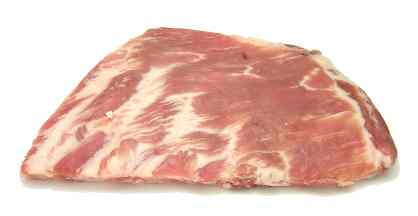All Ingredients
Pont-l'Evêque
This ancient and well-regarded French cow's milk cheese isn't as stinky as other washed rind cheeses. It's best not to eat the rind.
Learn moreponzu sauce
Ponzu sauce is a dark tart lemon juice based sauce. It is usually made by combining soy sauce, lemon juice, vinegar and sometimes kelp, bonito flakes or mirin.
Learn morepopcorn
Air-popped popcorn is a terrific snack that's high in fiber and low in fat -- assuming that you don't add lots of butter and salt.
Learn morepopcorn rice
This rice is a cross between basmati and American long-grain. It can be found as a brown rice or a polished white rice. Common brands include Texmati, Delta Rose, and Cajun Country Popcorn. The name popcorn refers to the taste not the apperance.
Learn morepopcorn salt
This table salt has very fine grains, which adhere better to popcorn, potato chips, and French fries.
Learn morepoppy seeds
These tiny, nutty seeds are typically used in baked goods, but some cuisines also use them in savory dishes. Europeans prefer black poppy seeds, while Indians prefer white, but the two kinds can be substituted for one another. Since poppy seeds are high in fat, they tend to go rancid quickly, so buy small amounts and store them in the refrigerator. Consuming poppy seeds can result in a false positive on a drug test.
Learn moreporcini
Porcini mushrooms are well appreciated in Europe for their meaty texture and interesting flavor. If you can find them fresh, pick the largest caps you can find (or afford). Just wipe them clean before using; if you wash them, they'll soak up the water like a sponge. Dried porcini are also excellent.
Learn moreporgies
This category includes the scup = fair maid, sea bream, red porgy, sheepshead porgy, shad porgy, whitebone porgy, and jolthead porgy. Porgies tend to be bony, but they're highly prized for their delicate flavor.
Learn morePork
Years ago, cookbooks instructed readers to cook pork until it reached a scorching internal temperature of 180 degrees. Back then, the pork chops that landed on our plates were dry and leathery, and we often used lubricants like applesauce or sauerkraut to help get them down. After more careful research, food scientists now tell us that pork is safe to eat after it reaches an internal temperature of 160 degrees. At that temperature, pork can be juicy, tender, and flavorful.
Learn morepork arm picnic
Southerners like to use this fatty, bony cut to make barbecued pulled pork. It's also available boneless. This is also a good, economical cut to get if you want to make ground pork, kabobs, or stir-fry strips.
Learn morepork back ribs
These ribs are meatier than spareribs, but they're not as meaty as country-style ribs. Allow 2/3 pound per person.
Learn morepork blade roast
This somewhat fatty, economical roast is sold either bone-in and boneless. If you buy it as a bone-in roast, make sure that the butcher has cracked the backbone between the ribs so it's easy to carve. Country-style ribs are cut from this piece.
Learn morepork blade steak
These are cut from the Boston butt, and they're a cheap and flavorful alternative to pork chops. They're a bit too tough to fry, but they're wonderful if slowly braised.
Learn morepork butterfly chop
This is a thick chop taken from the loin eye which is cut almost in half so that it forms a butterfly pattern when opened on the hinge.
Learn morepork center loin roast
For many cooks, this lean and tender cut makes the best pork roast of all. One drawback is that it includes part of the animal's backbone, which adds flavor but can make the roast hard to slice after cooking. One solution is to ask your butcher either to cut off the bone and tie it back on or to cut through the backbone in several places so that you can easily slice the cooked roast into chops. If the backbone is removed and the ribs are "Frenched" or trimmed of meat, this cut is called a rack of pork. To make a crown roast of pork, get two racks and tie them into a circular crown. Your roast will be moister if the butcher doesn't trim the big slab of fat that usually comes with this cut. The roast will be moister if you cut the fat off after the roast is cooked. Steaks cut from this roast are called pork loin chops or pork rib chops.
Learn morepork chop
Pork chops usually turn out juicier if they're thick and if they're attached to bone. Several different cuts are called pork chops. The most tender and expensive ones are the pork loin chop and the pork rib chop. Next in the tenderness hierarchy are the pork sirloin chop, pork top loin chop, and the pork loin blade chop. Pork arm steaks and pork blade steaks are relatively tough and fatty, but they're very flavorful. They're better if they're braised rather than grilled, broiled, or fried.
Learn morepork country-style ribs
These have more meat than spareribs or back ribs, but they aren't as easy to eat with fingers. Allow 1/2 pound per person. They come boneless (pictured) or bone-in.
Learn morepork cube steak
This is a relatively tough cut of meat, often from the shoulder, that the butcher tenderizes mechanically.
Learn morepork cubes
These are cubes that are put on skewers for grilling. Don't confuse cubes for kabobs with pork stew meat, which is too tough to grill.
Learn morepork heart
Pork hearts are a bit smaller than veal hearts. They're best cooked using moist heat, say by braising them or cooking them in a stew.
Learn morepork kidneys
Like beef kidneys, these are too tough to cook using dry heat. It's best to cook them slowly using moist heat. To prepare them, first cut off the outer membrane, then cut them lengthwise to expose a white blob of fat in the middle, which should be discarded. Next, soak the kidney in acidulated water or buttermilk for about an hour. This will make the flavor much more mild.
Learn morepork leg
The meat from this part of the pig is usually made into hams, but fresh leg meat is lean and makes a terrific roast.
Learn morepork loin blade chop
These are cut from the blade roast, which is the part of the loin that's closest to the shoulder. You can grill, broil, braise, or panfry them. Don't confuse this cut with the pork blade steak, which is cut from the Boston butt and is fattier.
Learn morepork loin chop
This is distinguished by a T-shaped bone that's off to one side. It's a great chop to grill, broil, or panfry.
Learn morepork loin cuts
This is where we get the leanest and most tender pork cuts. Since they're lean, these cuts tend to dry out if overcooked. Pork is safe to eat if it's cooked to an interior temperature of 160 degrees. There are three main parts of the loin: the blade end, which is closest to the shoulder and tends to be fatty; the sirloin end, which is closest to the rump and tends to be bony; and the center portion in the middle, which is lean, tender, and expensive.
Learn morepork picnic shoulder
This comes from the lower part of the pig's shoulder. It's usually made into smoked hams, but fresh picnic shoulder makes for very juicy barbecued pulled pork.
Learn morepork roast
You can oven-roast several pork cuts. Many cooks think that the pork center loin roast is the best choice--it's moist, tender, and flavorful. Pork tenderloins are also popular because they're lean, tender, and boneless. As you move away from the center of the pig, the roasts become either bonier or fattier or less tender, but they're more economical and often packed with flavor. Good choices include the pork top loin roast, fresh pork leg, pork sirloin roast and Boston butt.
Learn morepork shoulder
Meat from this section is relatively fatty, which makes for juicy, tender, and flavorful roasts as well as clogged arteries.
Learn morepork side
This is where the spareribs come from. Other meat from this section is usually cured as bacon and salt pork.
Learn morepork sirloin cutlet
These lean steaks are similar to sirloin chops, only meatier and boneless.
Learn morepork sirloin roast
This is a fairly lean and economical roast. A bone-in sirloin roast contains parts of the hipbone and backbone, so it's tough to carve. It's usually worth the extra money to get a rolled and tied boneless sirloin roast.
Learn morepork spareribs
These aren't as meaty as country-style ribs or back ribs, but they're popular at barbecues since they're easy to eat with your fingers. Allow 4/5 pound per person. St. Louis style ribs are spareribs that have been trimmed of the brisket bone.
Learn morepork stew meat
This are pieces of meat that are too tough to grill, broil, or panfry. They're best if cooked very slowly in a liquid.
Learn morepork tenderloin
This cut is lean, tender, and boneless, so it commands a high price. It's delicious roasted, grilled, or broiled as long as you don't overcook it. Tenderloins are usually sold in pairs, and sometimes cut up into tenderloin pieces. If there's a silver membrane on the tenderloin, remove it before cooking.
Learn morepork top loin roast
To make a boneless roast, the butcher puts two top loins together and ties them up, fat sides out.
Learn moreport
This is a sweet Portuguese fortified wine that's sipped as an after-dinner drink, or used as a cooking ingredient. Vintage ports are the best, but they are very expensive. The sediment at the bottom of the bottle is a sign of quality. Crusted or late-bottled vintage ports are both less expensive and less elegant. Cheaper yet are the lighter and fruitier wood ports, which include the tawny ports and the lowly ruby ports. Wood ports don't age well in the bottle, so try to drink them within a year or two of purchase. Once opened, port should be consumed within a week or so and stored in the refrigerator.
Learn morePort Salut cheese
Port Salut is a mild French semi-soft cow's milk cheese. Don't confuse with Danish Port Salut, which is also called Esrom cheese.
Learn moreportobello mushroom
These are just large cremini mushrooms, and their size (about the same as a hamburger patty) makes them perfect for grilling or roasting. They're also more flavorful than younger, smaller creminis.
Learn morePortuguese sweet bread
This sweet and tender bread is great for making French toast or for nibbling.
Learn morepot barley
This isn't as heavily processed as pearl barley, in that the endosperm is left intact, along with the inner pearl of the kernel. It takes about an hour to cook. Look for it in health food stores.
Learn more




































































































































































































































































































































































